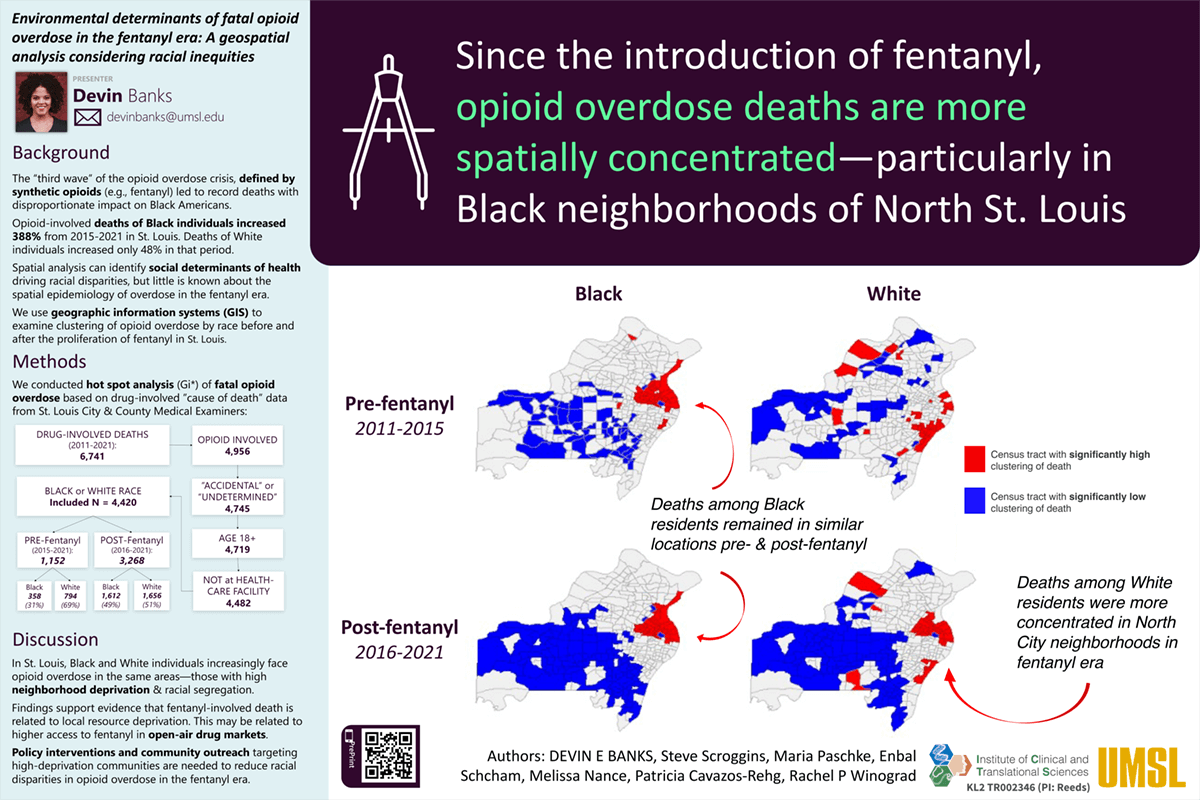
Introduction: The proliferation of illicit fentanyl and its analogues in the “third wave” of the opioid crisis has led to record overdose deaths disproportionately impacting Black individuals in the U.S.. Despite recent racialized shifts in opioid availability, little research has examined how the spatial epidemiology of opioid overdose death may have also shifted. This research has implications for providing targeted overdose-prevention services that address environmental determinants specific to fentanyl, which has eclipsed the morbidity and mortality burden of other drugs.
Methods: We examined fatal opioid overdose among Black and White adult decedent residents of St. Louis City and County, Missouri (N = 4,420), derived from cause-of-death data from the Medical Examiner’s Offices from 2011-2015 (pre-fentanyl) and 2016-2021 (post-fentanyl). Hotspot analyses using Gettis-Ord Gi* statistic were conducted stratified by era and race.
Results: The number of fatal opioid overdoses increased 184% between the pre-fentanyl era and fentanyl era: 350% among Black individuals and 109% among White individuals. Preliminary results indicated that fentanyl-era overdose deaths were clustered more densely than pre-fentanyl era deaths. Within the fentanyl era, deaths among Black residents were more densely clustered than those among White residents, indicating a smaller area of shared environmental characteristics contributing to fatal overdose. Hotspots were racially distinct pre-fentanyl; however, they substantially overlapped in the fentanyl era, with both Black and White deaths clustering in predominantly Black neighborhoods in North St. Louis, an area characterized by high racial and income segregation.
Impact: The third wave of the opioid overdose crisis is more spatially concentrated than previous waves, pointing to the importance of identifying and intervening with environmental determinants of health and highly impacted locales. Policies and outreach programs targeting neighborhoods with high deprivation are needed to reduce the disproportionate burden of overdose on Black communities.
Organization: University of Missouri – Columbia
Banks DE, Scroggins S, Paschke M, Shacham E, Nance M, Cavazos-Rehg P, Winograd RP